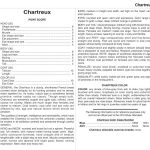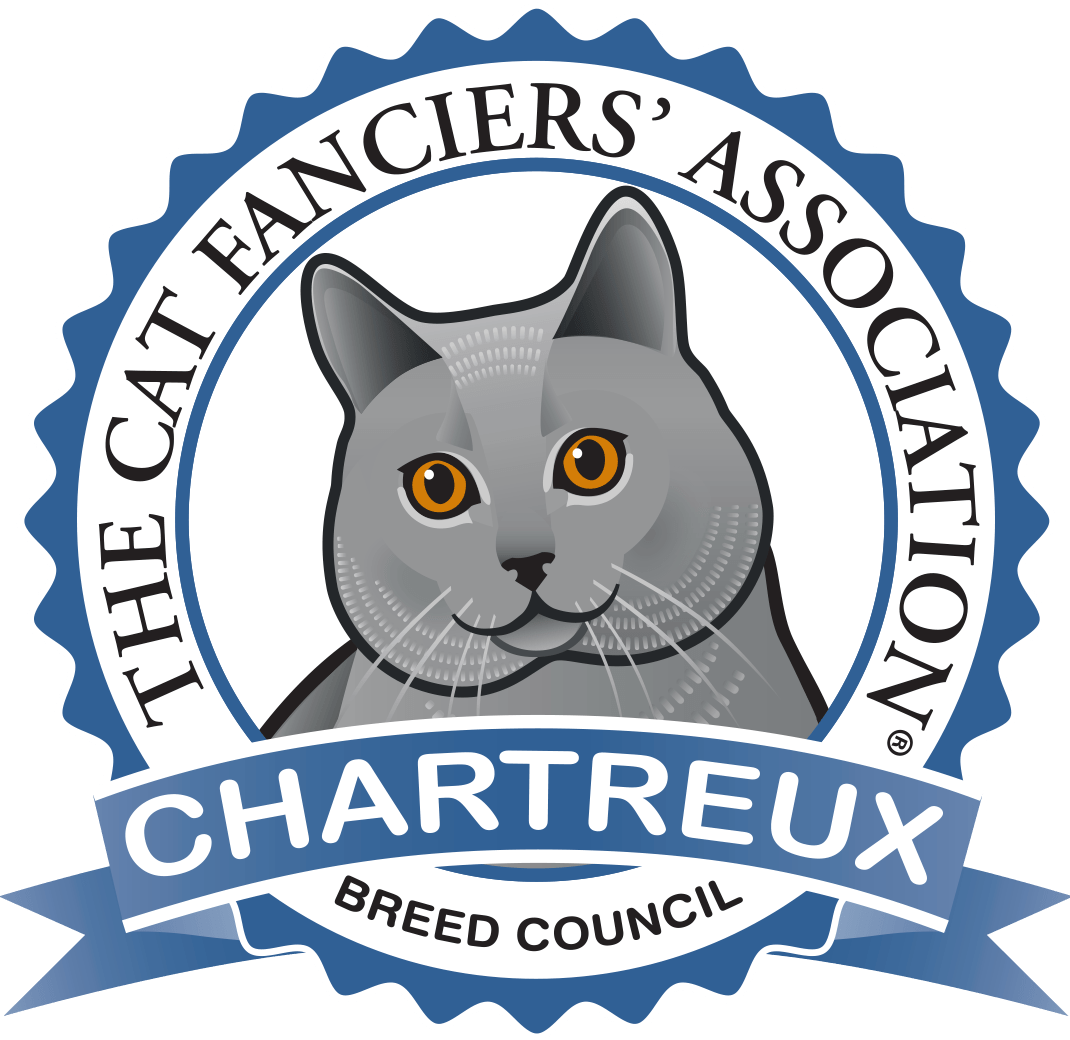
CFA Chartreux Standard
Download PDF (from CFA web site)
Chartreux
GENERAL: the Chartreux is a sturdy, shorthaired French breed coveted since antiquity for its hunting prowess and its dense, water repellent fur. Its husky, robust type is sometimes termed primitive, neither cobby nor classic. Though amply built, Chartreux are extremely supple and agile cats; refined, never coarse nor clumsy. Males are much larger than females and slower to mature. Coat texture, coat color and eye color are affected by sex, age and natural factors which should not penalize.
The qualities of strength, intelligence and amenability, which have enabled the Chartreux to survive the centuries unaided, should be evident in all exhibition animals and preserved through careful selection.
Head (35 points)
| Shape and size | 6 |
| Profile/nose | 5 |
| Muzzle | 5 |
| Ear placement | 5 |
| Ear shape and size | 5 |
| Eye shape and size | 5 |
| Neck | 4 |
HEAD and NECK: rounded and broad but not a sphere. Powerful jaw; full cheeks, with mature males having larger jowls. High, softly contoured forehead; nose straight and of medium length/width; with a slight stop at eye level. Muzzle comparatively small, narrow and tapered with slight pads. Sweet, smiling expression. Neck short and heavy set.
EARS: medium in height and width; set high on the head; very erect posture.
EYES: rounded and open; alert and expressive. Color range is copper to gold; a clear, deep, brilliant orange is preferred.
Body (30 points)
| Shape and size | 8 |
| Legs and feet | 8 |
| Boning | 5 |
| Musculature | 5 |
| Tail | 4 |
BODY and TAIL: robust physique: medium-long with broad shoulders and deep chest. Strong boning; muscle mass is solid and dense. Females are medium; males are large. Tail of moderate length; heavy at base; tapering to oval tip. Lively and flexible.
LEGS and FEET: legs comparatively short and fine-boned; straight and sturdy. Feet are round and medium in size (may appear almost dainty compared to body mass).
Coat (20 points)
| Texture | 15 |
| Length | 5 |
COAT: medium-short and slightly woolly in texture (should break like a sheepskin at neck and flanks). Resilient undercoat; longer, protective topcoat. NOTE: degree of woolliness depends on age, sex and habitat, mature males exhibiting the heaviest coats. Silkier, thinner coat permitted on females and cats under two years.
Color (15 points)
| Coat color | 10 |
| Eye color | 5 |
COLOR: any shade of blue-gray from ash to slate; tips lightly brushed with silver. Emphasis on color clarity and uniformity rather than shade. Preferred tone is a bright, unblemished blue with an overall iridescent sheen. Nose leather is slate gray; lips blue; paw pads are rose-taupe. Allowance made for ghost barring in kittens and for tail rings in juveniles under two years of age.
PENALIZE: severe nose break, snubbed or upturned nose, broad, heavy muzzle, palpable tail defect, eyes too close together giving angry look.
DISQUALIFY: white locket, visible tail kink, green eyes; any signs of lameness in the hindquarters.
